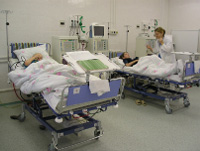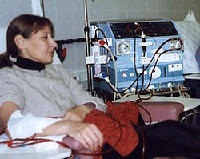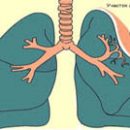Kidney anomalies are relatively rare. Consider in this article anomalies of the number and magnitude of the kidneys.
Content
Kidney anomalies are relatively rare. All kidney anomalies available can be divided into:
- Anomalies of the number of kidneys
- Anomalies of the arrangement of the kidneys
- Anomalies of kidney magnitude
- Anomalies of the structure of the kidneys.
Anomalies of the number of kidneys
Aplasia kidney
This pathology, in which the complete absence of one or both kidneys is noted. Aplasia of both kidneys — Pathology incompatible with life, so such newborns are not liable. This is a rather rare disease. At the same time, an aplasia is one of the kidneys occurs relatively more — at 4 — 8% of cases among all kidney anomalies. Note that the kidney aplasia can often be accompanied by other congenital development defects. Manifestations Aplasia kidney has no. The diagnosis of this anomaly is mainly random. Mainly for this use of kidney ultrasound and execretory urography, as well as angiography. It is very important to understand that a man with an aplasia kidney — this. N. sick with a single kidney, so in its illness, treatment should be carried out as much as possible in the mode to keep the function of this kidney. The remaining kidney increases in size, because it has to perform a double load. The danger of this state is that with the disease of the only kidney, it cannot be removed.
Doubling kidney
This pathology in children is more common. If aplasia is more common in boys, then doubled kidney — Girls. Kidney doubling can be both one- and bilateral. In addition, the doubling of the kidneys can be both complete and incomplete. With full doubling there are two kidneys with two ureters, which are opened in the bladder of individual sets.
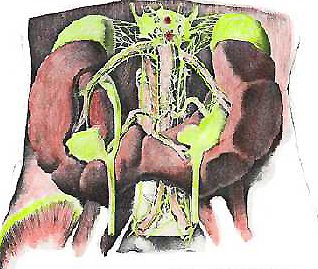 With incomplete doubling, it is usually a fusion of ureters at any level. When doubling the kidney, another pathology can also meet — Ureterocele (hernia-like protrusion of the wall of the ureter in the bladder). Manifestations of double kidney can be:
With incomplete doubling, it is usually a fusion of ureters at any level. When doubling the kidney, another pathology can also meet — Ureterocele (hernia-like protrusion of the wall of the ureter in the bladder). Manifestations of double kidney can be:
- Pyelonephritis,
- Stones kidneys,
- Hydronephrosis,
- Out of kidney.
The development of pyelonephritis with this anomaly often contributes to the violation of urine outflow, since this pathology is combined, as we have already said, with a ureterocele (expansion of the ureter in its site, which enters the wall of the bladder), which is manifested in the form of bubble-uretera reflux ( PMR). The same reason plays a role in the occurrence of stones in the kidneys.
Diagnose the doubling of the kidney with cystoscopy (they find the third mouth of the ureter instead of two), an excretory urography (revealed an increase in the size of the kidney, the third locher and ureter), ultrasound research. The doubling of the kidney does not appear in any way and in itself does not require treatment. However, in an abnormally developed kidney, especially with full doubling, any diseases often develop. Most often, urolithiasis occurs in one of the half of the double kidney, hydronephrosis, pyelonephritis. Sometimes the full doubling of the kidney is accompanied by the ectopia of the ureter. In this case, the ureter is not in the bladder, but to another organ. The mouth of the ureter can fall into the rectum, the cervix, the vagina, the urethra. It is possible to constantly leak up urine from the ureter.
Surgical treatment of kidney doubling is carried out with complications. It is aimed at correcting the cause of the complication. Produce various endoscopic and open operational interventions. Kidney always try to save. Remove the kidney (nephrectomy) only with almost complete loss of its function. Sometimes heminephrectomy is carried out – Removal of half, or parts of the kidney.
Extreme kidney
Extreme kidney is a rarely encountered anomaly of development. Usually, the addition kidney is below normal in the lumbar region or even lower in a small pelvis or a iliac region. Most often, the size of an additional kidney is less than normal sizes. Additional kidney has its own separate blood supply (renal artery and vein) and your ureter. The ureter of the added kidney can be included in the ureter of a normal kidney or opened with its own mouth in the bladder.
The added kidney does not appear, and the patient has no complaints until any disease appears in the additive kidney. The manifestations of the added kidney can be mostly constant stupid abdominal pain.
Diagnosis of additional kidney with ultrasound examination, excretory urography, computer and magnetic tomography tomography.
Surgical treatment of added kidneys is carried out if there are diseases of this kidney: hydronephrosis, urolithiasis, tumor, chronic pyelonephritis. The removal of the kidney is performed with the loss of its function or if the complications arisen are dangerous for the patient's life. In children, with good health, conservative treatment is carried out and constant monitoring of the state of this kidney and the common state of the child. If possible, the kidney is trying to save
Anomalies of kidney magnitude
Hypoplasia (underdevelopment) kidney
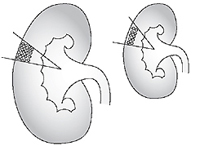 Gapopia (underdevelopment). With this anomaly for the development of the kidney of normal shape and structure, but smaller. The kidney function is normal. The manifestations of kidney hypoplasia are usually found when infection is attached to it when pyelonephritis develops.
Gapopia (underdevelopment). With this anomaly for the development of the kidney of normal shape and structure, but smaller. The kidney function is normal. The manifestations of kidney hypoplasia are usually found when infection is attached to it when pyelonephritis develops.
Hypoplasia can be one-sided and bilateral. Detect the kidney hypoplasia helps ultrasound examination, data of excretory urography and radioisotope research. Already on the usual radiograph you can see the kidney of reduced sizes. With an excretory urography, a reduced laughter and kidney cups are found. When carrying out renal arteries, the kidney sizes specify. This study helps to distinguish the kidney hypoplasia from diseases accompanied by a secondary decrease in the size of the kidney (nephrosclerosis).
With one-sided hypoplasia, the kidney treatment is usually not required.
The need for treatment of hypoplasia occurs when a disease develops in this kidney. Often pyelonephritis occurs in hypoplasiated kidney. If it is complicated by wrinkling the kidneys and the resistant renal arterial hypertension. In adults, in this case, resort to the removal of the kidney (nephrectomy). In children if more than 30% of the kidney function is saved, the kidney is trying to save. But in severe cases, the kidney is deleted.




